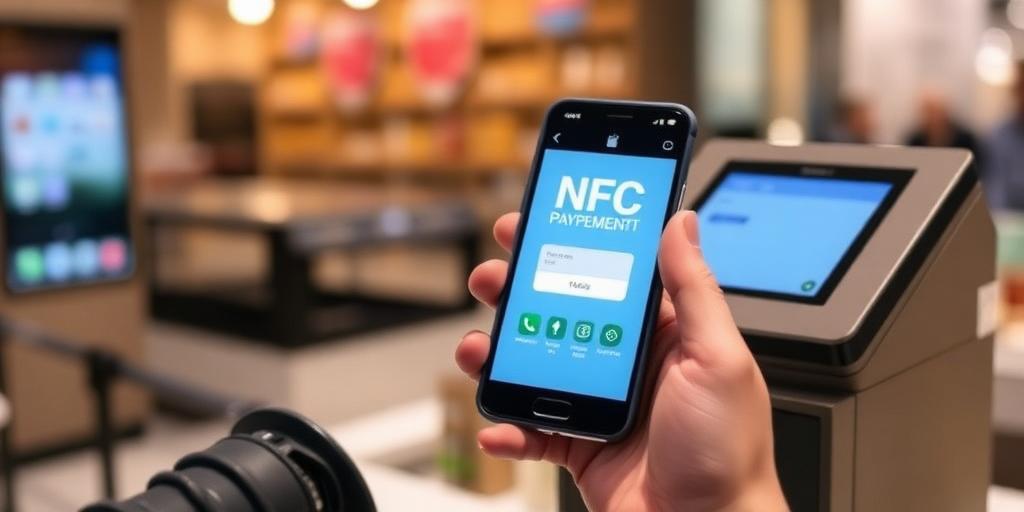Near Field Communication (NFC) has become a ubiquitous technology in modern smartphones, enabling a wide range of functionalities beyond just contactless payments. This article will explore the various applications of NFC on your smartphone, providing a comprehensive guide on how to utilize this technology effectively.
What is NFC?
NFC is a short-range wireless technology that enables communication between devices when they are brought within a few centimeters of each other. It is an evolution of RFID (Radio-Frequency Identification) technology and operates at 13.56 MHz. NFC is commonly used for contactless payments, data transfer, and device pairing.
NFC for Contactless Payments
One of the most popular uses of NFC is for making contactless payments. Mobile payment systems like Apple Pay, Google Pay, and Samsung Pay use NFC to securely transmit payment information to compatible point-of-sale (POS) terminals.
How to Set Up Contactless Payments:
- Check Compatibility: Ensure your smartphone has NFC capabilities. Most modern smartphones come equipped with NFC.
- Install a Mobile Payment App: Download and install a mobile payment app such as Google Pay, Apple Pay, or Samsung Pay.
- Add Your Card: Follow the app's instructions to add your credit or debit cards. This usually involves entering your card details or scanning the card with your phone's camera.
- Set as Default Payment Method: In your phone's settings, set your preferred mobile payment app as the default payment method.
How to Use Contactless Payments:
- Activate NFC: Make sure NFC is enabled in your phone's settings. This is usually found under the 'Connections' or 'Wireless & Networks' section.
- Open the Payment App: In some cases, you may need to open the payment app. However, many phones allow you to simply wake the screen.
- Tap to Pay: Hold your phone near the contactless payment terminal. You may need to authenticate with a fingerprint, face ID, or PIN, depending on the app and transaction amount.
- Confirmation: Wait for the confirmation signal, usually a checkmark or beep, indicating that the payment was successful.
Other Uses of NFC
Beyond payments, NFC offers a variety of other practical applications:
- Data Transfer:
- Android Beam (Deprecated): While Android Beam is no longer supported, NFC can still be used for data transfer through other apps. For example, you can use NFC to quickly share contact information, website links, or photos between compatible devices.
- Device Pairing:
- Bluetooth Pairing: NFC can simplify the process of pairing Bluetooth devices. Instead of manually searching for and connecting to a device, you can simply tap your phone against the device to initiate pairing.
- Wi-Fi Pairing: Some routers and devices support NFC pairing for Wi-Fi networks. Tap your phone against the NFC tag on the router to automatically connect to the Wi-Fi network without entering a password.
- Access Control:
- Security Badges: NFC can be used for access control in offices, gyms, and other secure locations. Your smartphone can act as a digital key, allowing you to enter by tapping it against an NFC-enabled reader.
- Public Transportation: Many public transportation systems use NFC-enabled cards for fare payment. Some systems also allow you to use your smartphone with NFC to pay for fares.
- Information Retrieval:
- Smart Posters and Tags: NFC tags can be embedded in posters, advertisements, or products to provide additional information when tapped with a smartphone. This can include product details, promotional offers, or website links.
- Business Cards: Digital business cards with NFC tags can instantly share your contact information with others. When someone taps your card with their smartphone, your contact details are automatically saved to their phone.
How to Enable NFC on Your Smartphone
Enabling NFC on your smartphone is typically a straightforward process:
Android:
- Open Settings: Go to your phone's settings menu.
- Select Connections: Tap on 'Connections' or 'Wireless & Networks'.
- Enable NFC: Look for the 'NFC' option and toggle it on. You may also find options to set your default payment app and manage other NFC-related settings.
iOS (iPhone):
- NFC is enabled by default on iPhones that support it. You don't need to manually enable NFC for features like Apple Pay. However, for other NFC functions, such as reading tags, you may need to use a third-party app.
Security Considerations
While NFC is generally secure, it's important to take certain precautions to protect your information:
- Enable Security Features: Use strong passwords, fingerprint authentication, or facial recognition to secure your phone.
- Monitor Transactions: Regularly check your bank and credit card statements for any unauthorized transactions.
- Disable NFC When Not in Use: Although it consumes minimal battery, disabling NFC when not in use can provide an extra layer of security.
- Be Cautious of Suspicious Tags: Avoid tapping on unfamiliar or suspicious NFC tags, as they could potentially lead to malicious websites or apps.
Conclusion
NFC technology offers a convenient and versatile way to interact with the world around you. From contactless payments to data transfer and access control, NFC enhances the functionality of your smartphone and simplifies many everyday tasks. By understanding how to use NFC effectively and taking appropriate security measures, you can take full advantage of this powerful technology.









